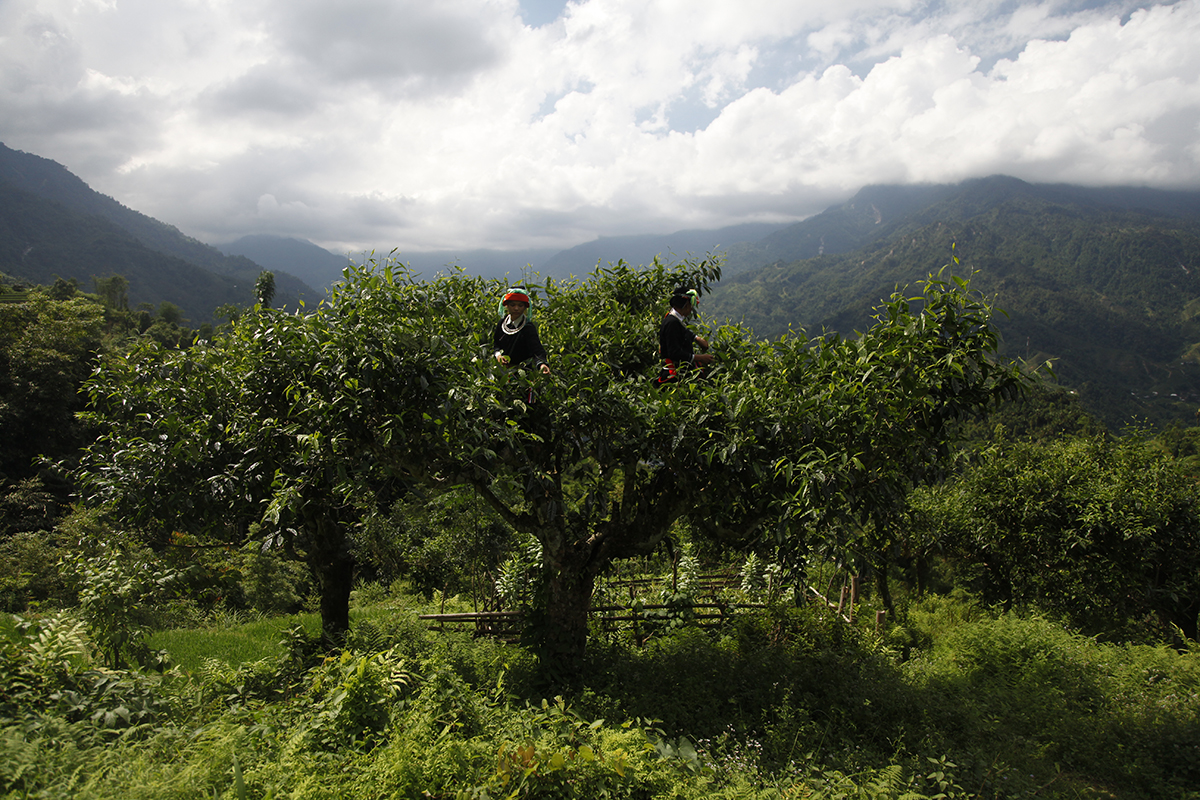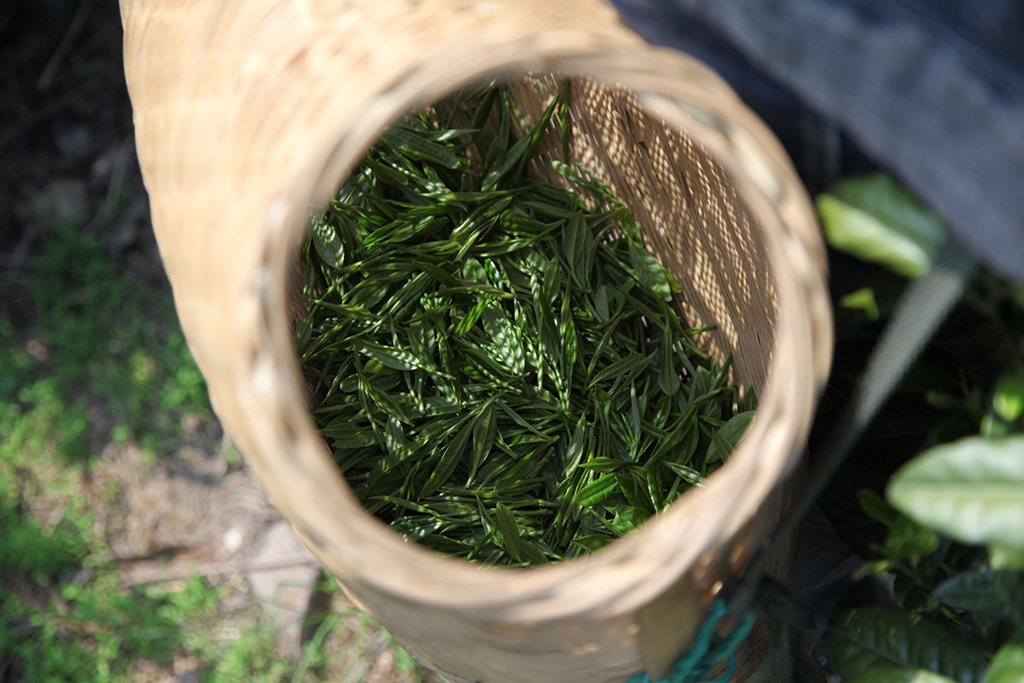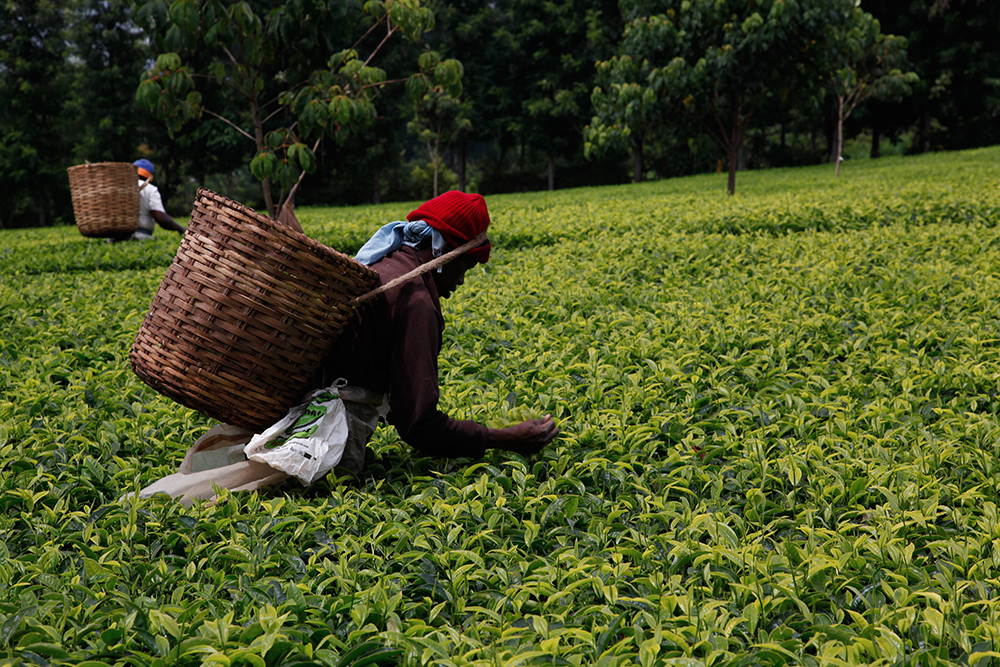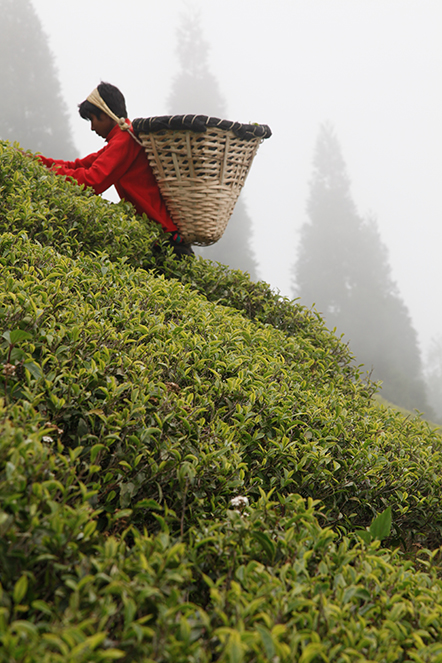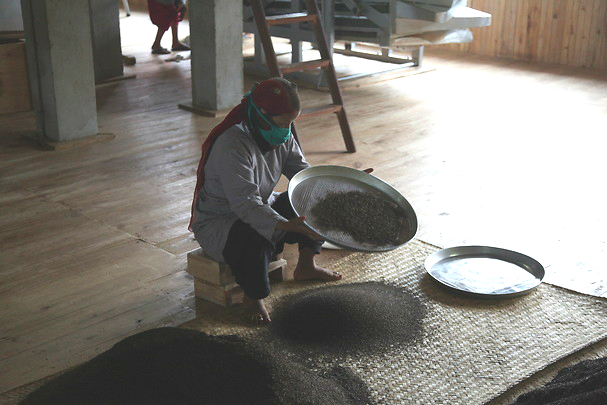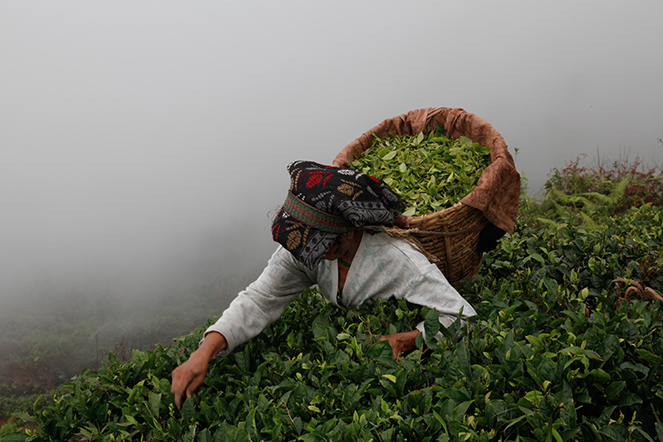It’s not easy to reach the wild tea plants growing on the border between China and Vietnam, especially in the hot season. The stifling, muggy air slows you down, and the leeches that infest the region take advantage and cling on. You walk beneath a high sun. The humidity in the air is palpable. But once you’re out of the jungle, after a good three hours of walking, you find yourself high up, among the famous tea plants that have been left to grow like trees. You can enjoy this beautiful sight, especially if you’re lucky enough to arrive as the leaves are being picked. (To be continued.)
Harvest
Very rigorous work
Wherever it comes from, a premium tea involves rigorous work. This starts with the harvest, which must be done meticulously, and of course continues throughout each stage in the processing. Here, in Anhui (China), they are harvesting Huang Shan Mao Feng – “Downy Tips of the Yellow Mountains”. We can see the care being taken with the plucking as well as when transporting the leaves, which are shaded from the sun but still have air circulating through them. The baskets are small to prevent any compression of the precious shoots
From field to factory
As soon as the tea leaves are picked, they must be taken to the factory as quickly as possible. The piles of leaves must not be allowed to ferment. Accidental fermentation is known to affect the quality of the tea. Here, in Kenya, they use very large baskets that are well ventilated so that the plucked leaves have room to breathe.
The finest teas in the world under the tree
This man dressed in red with a basket on his back, do you recognise him? He is filling his basket with the greatest care, delicately picking the best tea shoots, for you. A few fir trees can be seen through the mist. I hope that, at the bottom of your tree, in a few days’ time, he will place the finest teas in the world.
The art of picking leaves
As strong as a Turk
Transporting freshly harvested tea: a crucial stage
Manual skills are still essential in tea production
In most tea-producing countries, the best teas are plucked by hand. This means that growing high quality tea often requires the participation of many men and women. Not only is harvesting the leaves a meticulous task, but sorting them just before they are packed and dispatched is also done by hand. The work demands incredible patience.
After rice, tea is the agricultural resource that employs the greatest number of people around the world.
Special time spent with tea pluckers
The lunch break offers a special opportunity to sit down with the tea pluckers and get to know them. They don’t often get to see buyers, and are even less likely to have a conversation with them. It doesn’t take long before shyness turns into spontaneity. These are special moments which I enjoy very much.
First visit to Poobong
Vertiginous slopes and lingering mists form the scenery of Darjeeling. Out walking, a tea plucker appears in the thick fog. She climbs amongst the tea plants with astonishing agility. Poobong, a long-abandoned and inaccessible plantation, is gradually coming back to life. I am visiting it for the first time.

